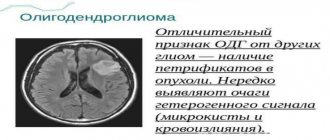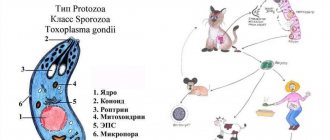Find out more about other diseases starting with the letter “C”: Compression of the brain; Senile chorea; Sensitive ataxia; Serous meningitis; "Rigid person" syndrome; Alien hand syndrome; Restless legs syndrome; Bogorad syndrome; West syndrome; Gaye-Wernicke syndrome; Guillain-Barre syndrome; Piriformis syndrome; Carpal tunnel syndrome; Carotid sinus syndrome; Kleine-Levin syndrome; Klippel-Feil syndrome; Cauda equina syndrome; Crumpy syndrome; Lambert-Eaton syndrome; Landau-Kleffner syndrome.
Lambert-Eaton syndrome is an autoimmune disease caused by disruption of the presynaptic membrane of motor nerve endings. Accompanies malignant tumors and autoimmune disorders. Lambert-Eaton syndrome is manifested by excessive fatigue and weakening of the muscle strength of the lower extremities, most often the buttocks and thighs.
The diagnosis is based on data from a neurological examination and electroneuromyography. Therapy for the syndrome consists of eliminating the tumor if it is present, using immunosuppressive therapy, plasmapheresis, and taking medications that promote the passage of nerve impulses along the neuromuscular synapse.
General information about the disease
The first description of Lambert-Eaton syndrome dates back to 1953. This disease was examined in detail in 1957 by American specialists: neurophysiologist Lambert and neurologist Eaton. Subsequently, it was named in their honor.
This disease is a myasthenic syndrome that accompanies processes of an autoimmune nature and the formation of malignant tumors. People aged 20-70 years are exposed to it. Most often their age exceeds 40 years. Initially, the syndrome was detected in males. The ratio of men and women was 5:1, respectively. Now the difference between the number of men and women has decreased.
According to various expert data, this disease occurs as a paraneoplastic syndrome in the majority of patients (from 50 to 75% of the total). The majority of them are men (about 70%). In women, this rarely occurs (up to 20%). Most of the tumors (80%) that are detected in Lambert-Eaton syndrome are caused by small cell lung cancer. In this case, myasthenic syndrome can occur several years earlier than the process of tumor formation. Occasionally, Lambert-Eaton syndrome is accompanied by other paraneoplastic syndromes, in particular paraneoplastic polyneuropathy.
Causes of incidence of this pathology
This syndrome can be either congenital or acquired. It occurs due to mutations in the genes of proteins responsible for muscle contractions.
The syndrome occurs in association with malignant tumors (in the stomach, bronchi, ovaries, prostate, colon (colorectal cancer), reticulosarcoma) and autoimmune processes in the body (autoimmune thyroiditis, rheumatoid arthritis, Sjogren's disease, systemic lupus erythematosus, etc.) . The pathogenetic substrate of the syndrome is autoimmune mechanisms.
When studying patients with this disease, the majority of them (90%) have antibodies to calcium channels, which are found in the structure of the endings of motor nerve fibers and tumor cells. According to experts, the autoimmune attack is aimed at the presynaptic membrane of the neuromuscular synapse. Due to its disruption, the release of the neuromuscular transmission mediator, acetylcholine, is reduced, which leads to a disruption in the passage of excitation moving from the nerve fiber to the muscles. This process manifests the main symptoms of the syndrome in the body: excessive fatigue and muscle weakness.
Signs of Lambert-Eaton syndrome
The main symptomatic manifestations of this disease:
- excessive fatigue of the patient and muscle weakness, mainly in the lower extremities (hips and pelvic girdle);
- when interviewing patients, complaints about weakness of the legs and their instability during movement are revealed, which are more clearly felt when walking for a long time and climbing stairs;
- patients with Lambert-Eaton syndrome have a paralytic “duck” gait;
- the manifestation of tendon reflexes is reduced;
- Lambert-Eaton syndrome is characterized by a certain increase in muscle strength during movement, which distinguishes it from myasthenia gravis, which is characterized by increased muscle weakness during movement.
Sometimes you may experience:
- discomfort in the back and neck;
- paresthesia in the distal limbs;
- myalgia;
- decreased eye sharpness;
- various autonomic disorders, such as decreased tear production, dry mouth, orthostatic arterial hypotension, distal hyperhidrosis;
- in some cases, patients experience drooping of the upper eyelid.
Rarely observed: impaired swallowing, double vision, eye movement disorders inherent in myasthenia gravis.
Other forms of myasthenia gravis
The following forms of myasthenia gravis are distinguished.
Ptosis
The patient has double vision, the movement of the eyeballs is limited, the eyelids do not close completely. These symptoms are caused by damage to the muscles responsible for moving the eye and raising the eyelids.
Based on these symptoms, diagnosis of myasthenia gravis is possible in the early stages of development. The eyes are most often affected asymmetrically, that is, one at a time, and the eyelids can be affected simultaneously (left and right).
The visual defect, as a rule, disappears after a long rest and appears again with eye strain.
Myasthenia Gravis
Generalized myasthenia gravis is characterized by damage to the entire muscular system. The first signs of the disease:
- slight lethargy and weakness in the muscles, disappearing after rest;
- arms and legs become heavy and cease to obey;
- possible signs of ocular myasthenia;
- change in heart rate;
- increased salivation.
Article on the topic: How to treat inflammation of the appendages in women?
The danger of this pathology is that the disease can affect the respiratory muscles, resulting in a person dying from suffocation. It is very important to diagnose myasthenia gravis in time, only in this case it is possible to prevent its further development.
The disease can be identified by analyzing the patient’s medical history and through a comprehensive examination. Periods of crises and remission are typical for generalized myasthenia.
If the patient experiences a crisis (determined by the symptoms described above), an ambulance must be called immediately.
Before the doctors arrive, the patient needs to be provided with good access to fresh air, complete rest, and given medications to drink that lower blood pressure.
Diagnosis of the disease
The diagnosis of Lambert-Eaton syndrome is made by a neurologist. The reasons for its placement are: identification of signs of the disease during a patient interview, a neurological examination and the results of electroneuromyography.
When interviewing the patient, a hereditary predisposition to malignant neoplasms and Lambert-Eaton syndrome is determined (whether it occurs in immediate relatives). When determining the neurological status, the following are detected: tetraparesis in the area of the proximal parts of the lower extremities, hyporeflexia, mild dysmetria when the patient performs coordination tests, a slight weakening of the pharyngeal and palatal reflexes.
Sometimes patients are prescribed a proserine test, which evaluates the ability of muscles to contract before and after the injection. In addition, laboratory tests are carried out to make it possible to determine the level of specific antibodies to the influence of acetylcholine receptors.
When performing electroneuromyography, a change in amplitudes is detected: the amplitude of resting action potentials decreases, and the amplitude of the M-response temporarily increases. This occurs against the background of voluntary muscle contractions, or rhythmic electrical stimulation of the nerve, occurring at a frequency of more than 10 Hz.
In the case when stimulation is performed at a frequency of 2-3 Hz, a decrease in the height of the M-response is detected. This process is characteristic of myasthenia gravis. The use of this study allows us to identify signs characteristic of Lambert-Eaton syndrome and distinguish it from similar diseases with neuromuscular pathology: myasthenia gravis, myopathy, polymyositis, amyotrophic lateral sclerosis, etc.
In order to prove the autoimmune nature of the disease, specialists may order immunological studies. Due to the fact that this disease could arise as a manifestation of a malignant neoplasm, experts recommend that when it is detected, the patient is examined for the presence of a tumor.
The list of examinations to detect a malignant tumor includes:
- blood test for cancer markers;
- computed tomography of the chest;
- multislice computed tomography of the abdominal organs;
- magnetic resonance imaging of the brain and spine (in this case, CT can also be performed);
- Ultrasound examination of the thyroid gland.
If after a tumor detection test there is no result, it must be performed every 6 months.
Symptoms and diagnosis
The basis of the symptoms is increased fatigue and weakness of a certain group of skeletal muscles.
Reference. The muscle tissue of the upper legs (hips and pelvic girdle) is predominantly affected.
In addition, the clinical picture of the syndrome is characterized by the following manifestations:
- Weakness in the legs, lack of stability, especially when climbing stairs and walking for long periods of time.
- Discomfort in the neck and back area, development of myalgia.
- Peripheral paresthesia.
- Decreased tendon reflexes.
- Occasionally, muscle soreness in the proximal lower extremities may be felt.
- Drooping of the upper eyelid.
- Gait disturbance - characterized by a “duck” gait.
- Autonomic disorders - dry mouth, orthostatic hypotension (a sharp decrease in blood pressure when a person takes an upright position), decreased salivation and sweating, crawling sensation in the legs, constipation, urination disorders, erectile dysfunction.
The pathology has characteristic manifestations
Also, some patients may experience oculomotor disorders, double vision, impaired swallowing and respiratory function, and a nasal voice.
A distinctive feature is an increase in muscle strength during physical activity, after which a rapid decrease is observed.
A thorough examination using various diagnostic techniques allows you to more accurately determine the symptoms and causes of myasthenic syndrome.
First, the specialist analyzes the patient’s complaints and draws up an anamnesis, taking into account the following factors:
- time of appearance of the first signs;
- hereditary data (whether immediate relatives had cancer or Lambert-Eaton syndrome);
- presence of rheumatoid arthritis;
- presence of vision problems (double vision, drooping eyelids).
Next, a general neurological examination is carried out , during which the patient performs special tests, which involve repeating certain movements. This allows us to identify possible weakness of the patient’s muscle tissue.
The patient is examined in several stages
To confirm the diagnosis, laboratory and hardware diagnostic methods may be prescribed:
- Laboratory technique for determining the level of specific antibodies to the effects of acetylcholine receptors.
- Electroneuromyography allows you to evaluate the speed of nerve impulse transmission and the degree of muscle excitability.
- CT and MRI are the most accurate methods that allow you to confirm a preliminary diagnosis.
Since there is a high probability of pathology developing against the background of an oncological process, an extensive examination of the patient to identify a malignant tumor is recommended.
If there are no results, it is recommended to be examined again after six months, since the syndrome can manifest itself several years before the diagnosis of primary oncology.
Treatment of pathology
Lambert-Eaton syndrome is a rather complex disease, manifested by a large number of symptoms characteristic of it. Therefore, his treatment takes place in a hospital setting. Treatment of Lambert-Eaton syndrome is determined by the cause of its occurrence:
- If the origin of Lambert-Eaton syndrome is associated with the manifestation of a malignant tumor, therapy is primarily aimed at eliminating it. When the fight against the tumor has a positive effect, the symptoms of Lambert-Eaton syndrome also decrease.
- If the origin of the disease is autoimmune in nature, then symptomatic treatment is performed. For these purposes, the following are used: medications (most often glucocorticosteroids) that suppress the immune system; plasmapheresis procedures that filter autoantibodies circulating in the blood.
To restore the conduction of nerve impulses at the neuromuscular synapse, experts suggest taking medications - acetylcholinesterase inhibitors, which contribute to this due to the accumulation of acetylcholine in the synapse. These include pyridostigmine and ipidacrine.
Previously, guanidine was used for these purposes, which simplified the release of acetylcholine by nerve endings. Due to the high level of toxicity and side effects on the bone marrow and kidneys, it has not been widely used. The drug 3,4-diaminopyridine has a similar effect.
Compared to guanidine, it is less toxic. Side effects when taking 3,4-diaminopyridine are: paresthesia, tachycardia, diarrhea, increased secretion of the bronchial glands. 3,4-diaminopyridine is an effective drug, which has been clinically proven. However, it is rarely used and only in specialized medical centers.
Treatment for Lambert-Eaton syndrome often uses human immunoglobulin from a healthy person, which is administered intravenously to the patient. To improve the ability of muscle contraction, potassium supplements are prescribed, which also have a positive effect on the passage of nerve impulses. During the treatment, cytostatics and hormonal drugs are used to reduce the severity of autoimmune processes in the patient’s body.
Read also
Facial paralysis (Bell's palsy/facial neuritis)
Facial paralysis is spontaneous weakness of ½ of the face.
The cause is swelling of the facial nerve, as a result of its compression inside the temporal bone or in the outlet from it. Most often this leads to... Read more
Syringomyelia
Syringomyelia is a disease caused by the formation of spaces in the substance of the spinal cord filled with cerebrospinal fluid. They expand the spinal cord at the level of the lower cervical and thoracic regions...
More details
Myositis
Myositis is a group of diseases characterized by an inflammatory process in skeletal muscles. Depending on the cause of the disease, there are several forms of myositis: Autoimmune…
More details
Consequences of traumatic injuries to the skull, spine, brain and spinal cord
Traumatic brain injuries, or traumatic brain injuries, are damage to the brain that impair brain function. Brain injuries are divided into two large groups - closed...
More details
Perinatal encephalopathy
Perinatal encephalopathy is a frequently encountered concept in the practice of pediatricians and pediatric neurologists! What it is? Literally, “perinatal encephalopathy” means “damage to the brain in the perinatal...
More details









